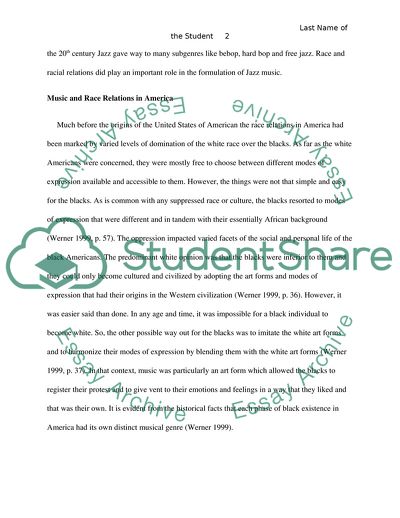Cite this document
(Impact of Racial Relations in America on the Development of Jazz Coursework, n.d.)
Impact of Racial Relations in America on the Development of Jazz Coursework. Retrieved from https://studentshare.org/music/1752895-what-was-the-impact-of-racial-relations-in-america-on-the-development-of-jazz
Impact of Racial Relations in America on the Development of Jazz Coursework. Retrieved from https://studentshare.org/music/1752895-what-was-the-impact-of-racial-relations-in-america-on-the-development-of-jazz
(Impact of Racial Relations in America on the Development of Jazz Coursework)
Impact of Racial Relations in America on the Development of Jazz Coursework. https://studentshare.org/music/1752895-what-was-the-impact-of-racial-relations-in-america-on-the-development-of-jazz.
Impact of Racial Relations in America on the Development of Jazz Coursework. https://studentshare.org/music/1752895-what-was-the-impact-of-racial-relations-in-america-on-the-development-of-jazz.
“Impact of Racial Relations in America on the Development of Jazz Coursework”. https://studentshare.org/music/1752895-what-was-the-impact-of-racial-relations-in-america-on-the-development-of-jazz.


